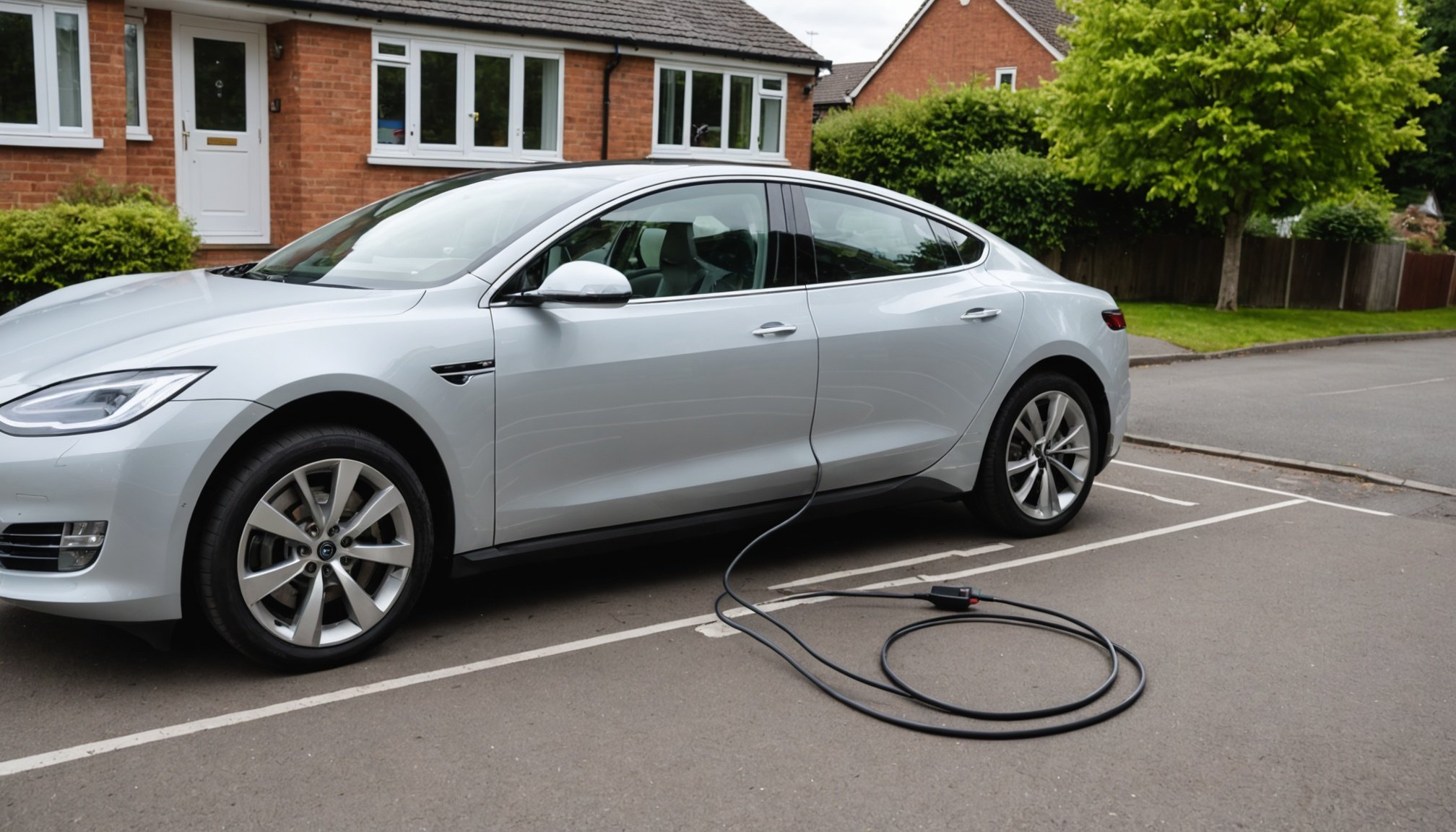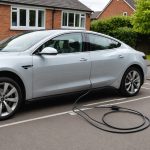As the UK embraces electric vehicles, installing a home charging station is becoming essential. This step-by-step guide walks you through the entire process, ensuring you understand each stage from planning to completion. Say goodbye to range anxiety and hello to the convenience of charging at home. With practical tips and clear instructions, you will confidently transform your garage or driveway into an eco-friendly fuel station, making your journey towards sustainability smoother than ever.
Understanding Electric Vehicle Charging Stations
Electric vehicle charging stations are essential for powering electric vehicles (EVs) and ensuring their continued operation. They provide the vital link between the electric grid and the vehicle, allowing for efficient energy transfer. Electric Vehicle Charging Stations come in various types, each designed to meet different needs and environments.
En parallèle : Unlocking Hidden Potential: Creative Ways to Maximize Under-Stair Storage in Your Portsmouth Townhouse
Types of Charging Stations
There are several types of charging stations available for home use. The most common are Level 1 and Level 2 chargers. Level 1 chargers use a standard household outlet and are typically slower, taking longer to fully charge a vehicle. Level 2 chargers, on the other hand, require a special installation and provide faster charging, making them ideal for overnight use.
Benefits of Home Charging Solutions
Installing a charging station at home offers numerous benefits. It provides convenience by allowing EV owners to charge their vehicles overnight, ensuring they start each day with a full battery. Additionally, home charging solutions can be more cost-effective than public charging stations, offering savings on energy costs. Moreover, having a home charging station increases the value of the property, making it an attractive feature for potential buyers.
A lire en complément : Effortless Rooftop Gardening: Transform Your London Terrace into a Low-Maintenance Oasis
Legal and Regulatory Considerations
Navigating the UK Electric Vehicle Regulations is crucial when installing a home charging station. Understanding the legal framework ensures compliance and a smooth installation process. In the UK, specific Charging Station Compliance measures must be met, starting with obtaining the necessary permits.
Required Permits and Approvals
Before installation, homeowners need to secure relevant permits. This often involves liaising with local authorities to ensure the charging station meets zoning and planning requirements. Additionally, an approved electrician must conduct the installation to certify that it adheres to Legal Requirements.
Compliance with Electrical Safety Standards
Ensuring compliance with electrical safety standards is paramount. The installation must follow the Institute of Electrical and Electronics Engineers (IEEE) guidelines and the Institution of Engineering and Technology (IET) Wiring Regulations. These standards ensure the safe operation of the charging station, mitigating risks such as electrical fires or malfunctions.
By aligning with these regulations, homeowners not only safeguard their property but also contribute to a safer, more reliable network of electric vehicle infrastructure. Understanding and adhering to these Legal Requirements is essential for a successful and compliant home charging station installation.
Essential Equipment for Installation
Understanding the EV Charger Equipment is crucial for a successful installation. A typical charging station comprises several key components, each playing a vital role in the system's functionality. These components include the charging unit, which is the core piece of technology that manages energy flow, and the cable and connector, which link the vehicle to the charging station. Additionally, the mounting bracket is essential for securing the unit in place.
Tools and Materials Needed for Installation
To install a charging station, specific Installation Tools are required. These include a drill for securing the mounting bracket, a voltage tester to ensure electrical safety, and wire strippers for managing electrical connections. Safety gear, such as gloves and goggles, is also recommended to protect against potential hazards.
Recommendations for Compatible Charging Stations
Choosing the right charging station involves considering compatibility with your vehicle and home electrical system. Look for stations that offer universal connectors to ensure they can charge different EV models. Additionally, selecting a station with smart features, such as Wi-Fi connectivity, can provide enhanced control and monitoring capabilities. These considerations will ensure a seamless and efficient charging experience.
Step-by-Step Installation Process
Installing an EV Charger at home can seem daunting, but following a structured Installation Guide simplifies the task. Below is a detailed walkthrough to ensure a smooth installation.
Preparing the Installation Site
Before beginning, assess the location for your EV Charger Installation. Ensure the site is close to your vehicle's parking spot and has adequate space for the charging unit. Verify the area is free from obstructions and has access to a reliable power source. Mark the mounting points using the Step-by-Step Instructions provided with your charger.
Connecting the Charging Station to the Power Supply
Once the site is prepared, connect the charging station to the power supply. Begin by switching off the main power to prevent any electrical hazards. Use a voltage tester to confirm the power is off. Follow the manufacturer's Installation Guide to connect the wires securely, ensuring all connections are tight and insulated.
Testing the Installation for Safety and Functionality
After connecting the charger, restore the power and test the installation. Use a voltage tester to check for proper voltage levels. Plug in your EV to ensure the charging process initiates correctly. Monitor the charger for any unusual noises or error indicators. This final step confirms the charger is safe and fully operational.
Safety Tips and Precautions
Ensuring EV Charger Safety during installation is paramount to protect both property and individuals. Awareness of potential hazards and adherence to Installation Safety Tips can significantly reduce risks.
Common Safety Hazards and How to Avoid Them
One of the primary concerns is electrical safety. Incorrect handling of electrical components can lead to shocks or fires. To mitigate this, always turn off the main power supply before beginning any work. Use a voltage tester to verify the absence of live current. Additionally, ensure all connections are tight and insulated to prevent short circuits.
Another potential hazard is the improper use of tools. Always wear protective gear, such as gloves and goggles, to safeguard against physical injuries. Follow the Electrical Safety guidelines provided by the manufacturer to handle tools correctly.
Emergency Procedures and Precautions
In the event of an electrical emergency, such as a fire or shock, knowing the appropriate response is crucial. Keep a fire extinguisher rated for electrical fires nearby and familiarize yourself with its operation. If someone experiences an electric shock, disconnect the power source immediately and call emergency services. Always have a first-aid kit on hand and know basic first-aid procedures. These precautions ensure a safer installation environment.
Cost Considerations
Understanding the EV Charging Station Costs is vital when planning for an installation. The expenses can vary significantly based on the type of charger you choose. Installation Expenses include the cost of the charging unit itself, which can range from a few hundred to several thousand pounds. Additionally, hiring a certified electrician for installation is crucial, and their fees can add to the overall cost.
Budgeting for EV Charger installation is essential. Consider potential savings and incentives that may be available. Some regions offer grants or tax credits to offset the installation expenses, reducing the financial burden on homeowners. It's advisable to research local incentives to maximise savings.
In the long term, owning an EV charging station can lead to substantial financial benefits. Home charging is generally cheaper than public charging, leading to lower energy costs over time. Additionally, having a home charging station can increase property value, making it a wise investment. By carefully evaluating these cost considerations, homeowners can make informed decisions that align with their budget and future savings goals.
Maintenance and Troubleshooting
Ensuring the longevity and functionality of your EV charging station requires regular maintenance. Routine checks can prevent many issues and keep your charger in top condition. Start by inspecting the charging unit and cables for any visible wear or damage. Cleaning the connectors with a dry cloth ensures optimal energy transfer. Regularly update the software if your charger has smart features, as these updates often include performance enhancements and security patches.
Troubleshooting Common Issues
Despite regular maintenance, problems may arise. A common issue is the charger not recognising the vehicle. In this case, check the connectors for dirt or debris and ensure they are securely attached. If the charger stops mid-charge, verify the power supply and reset the unit if necessary. Monitor for any error messages displayed on the charger's interface.
When to Seek Professional Help
Some issues require expert intervention. If you encounter persistent problems, such as frequent disconnections or error codes you cannot resolve, it is advisable to contact a professional. An electrician can diagnose electrical faults and ensure compliance with safety standards. Engaging a professional for complex issues ensures your EV charger remains safe and efficient.
Visual Aids and Resources
Visual aids are invaluable during the installation process of an EV charging station. They provide clear and concise guidance, reducing the likelihood of errors and ensuring a smooth setup. Installation diagrams are particularly useful, offering step-by-step visuals that illustrate the correct placement and connection of components. These diagrams simplify complex procedures, making them accessible even to those with minimal technical expertise.
Instructional videos complement diagrams by providing dynamic demonstrations. Watching an expert perform the installation can clarify intricate steps and highlight potential pitfalls. These videos often include tips and tricks that can save time and enhance safety. Look for resources that cover your specific charger model to ensure compatibility and accuracy.
For those seeking further assistance, numerous helpful resources are available online. Manufacturer websites typically offer comprehensive documentation, including user manuals and troubleshooting guides. Additionally, forums and community groups can provide peer support and shared experiences. While links to these resources are not provided here, a quick online search using your charger's make and model will yield valuable information. Engaging with these materials empowers users to confidently complete their EV charger installation.
Frequently Asked Questions
When it comes to EV Charger FAQs, many individuals have common concerns regarding installation and usage. One frequent query is about the time it takes to install a home charging station. Typically, installation can be completed within a few hours by a certified electrician, provided all necessary permits and approvals are in place.
Addressing Common Concerns
A prevalent concern is the potential impact on home electricity bills. While charging an EV does increase electricity consumption, it is generally more cost-effective than using public charging stations. Additionally, some homeowners worry about the compatibility of charging stations with their vehicles. Opting for chargers with universal connectors can alleviate this concern.
Clarifications on Legal and Regulatory Queries
Homeowners often have questions about the legal requirements for installing a charging station. In the UK, compliance with specific zoning and planning regulations is necessary. Ensuring that an approved electrician conducts the installation helps meet these legal standards.
Answers to Technical Questions
Technical inquiries frequently involve the charging speed of different station types. Level 2 chargers are faster than Level 1 chargers, making them ideal for overnight charging. Another technical question relates to the safety features of charging stations. Most modern chargers include built-in safety mechanisms to prevent overcharging and electrical faults.











